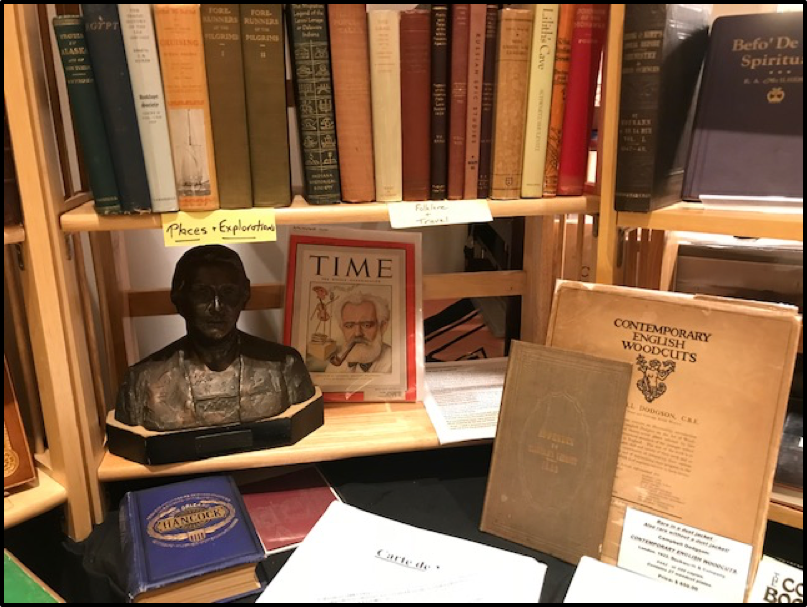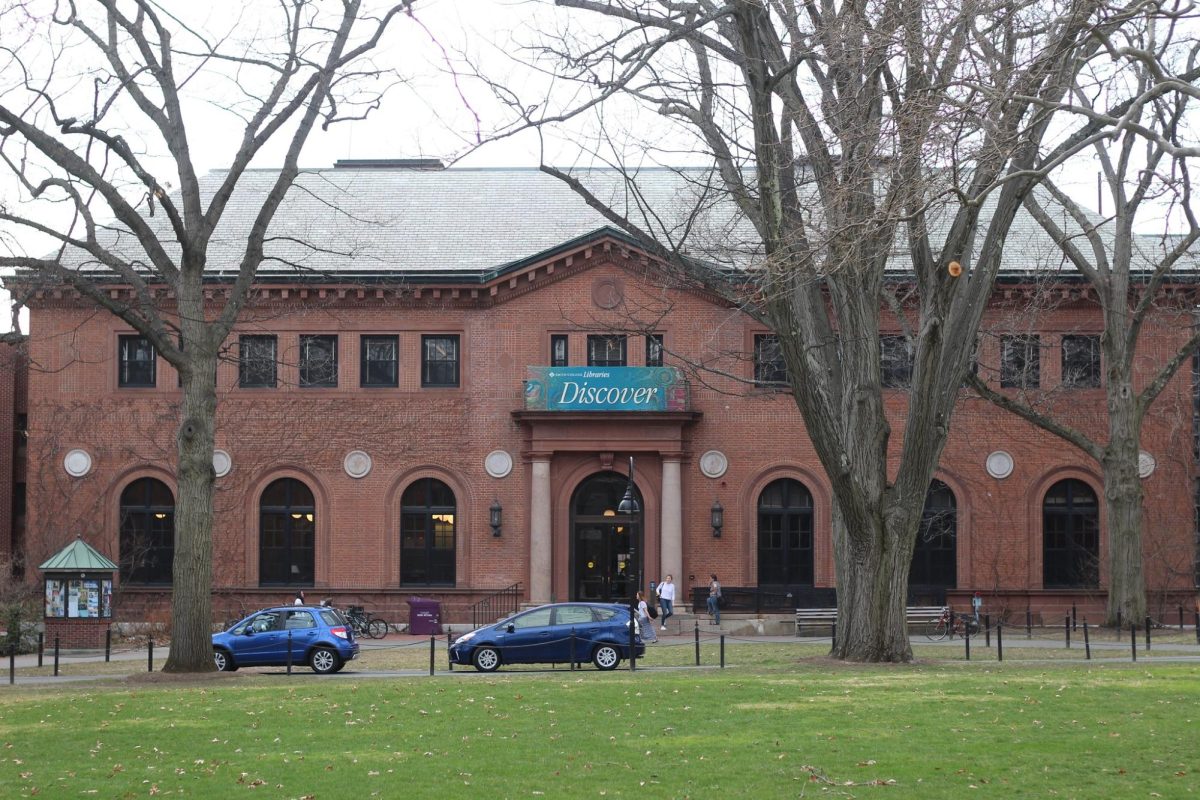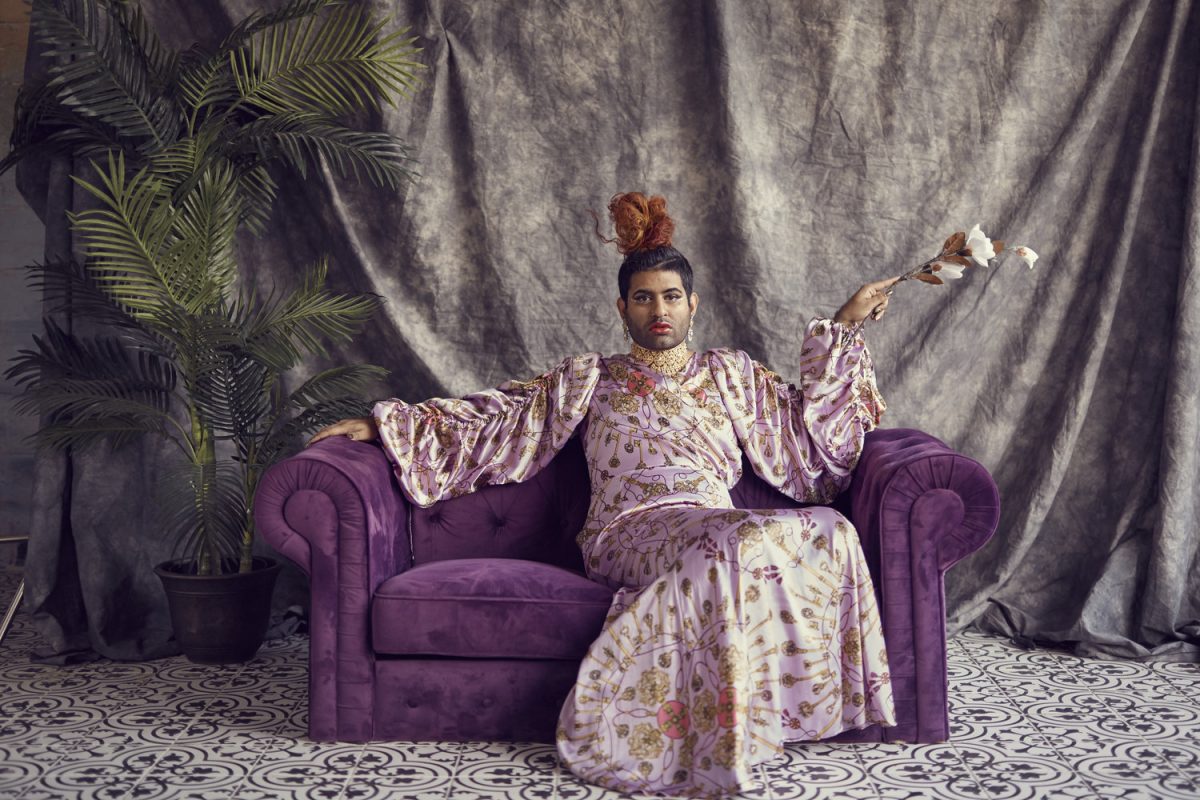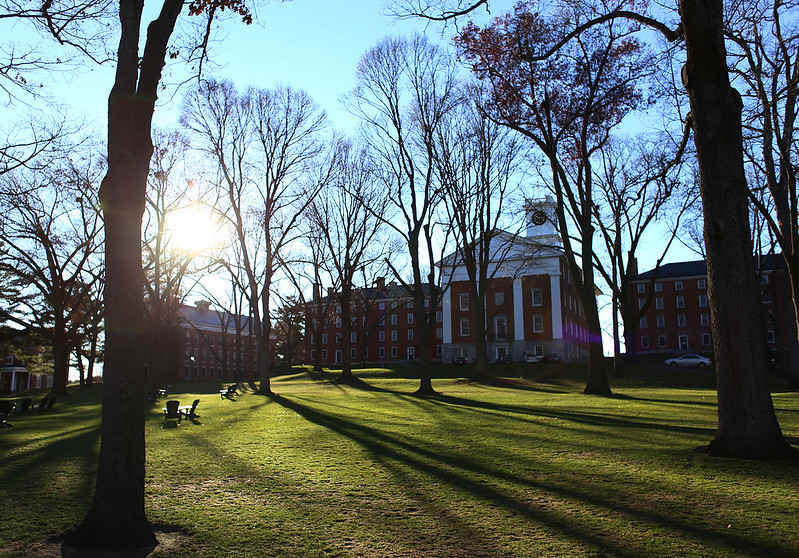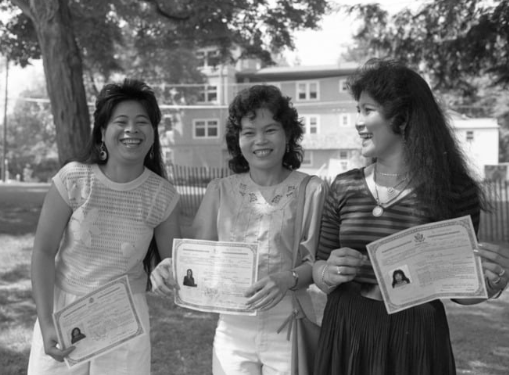More than 30 antiquarian book vendors and artists ventured to Smith College in Northampton for the fourth annual Northampton Book and Book Arts Fair, bringing not only their favorite literature and artwork, but reminders of history.
Printers, papermakers, designers and collectors from as far as Pennsylvania and Maryland gathered in the Smith College Campus Center for the event, held on Friday and Saturday.
Among their other items, vendors featured an assortment of fine press or artist books. Sidney Berger, an adjunct faculty member at Simmons College, discussed these broad encompassing categories along with his general definition of books.
Leading a panel of special collections curators an hour before the fair opened at 5 p.m. on Friday, Berger defined a book as a container of text, where “even a blank book has a text.”
This text varies in presentation between fine print books and artist ones, with fine press more often featuring the traditional format of words on pages. Artist books meanwhile, come in an endless variety of shapes, colors and sizes and may have little to no words.
Berger described both types as high quality and carefully hand-crafted but sparing in supply because they require great effort over a long period of time to make.
While associate curators Leslie Fields and Karen Kukil, at Smith College and Mount Holyoke College respectively, talked about extensive collections of fine print and artist books, University of Massachusetts department of history professor Robert Cox said UMass’ collections focused elsewhere due to budgetary issues and Amherst’s past history.
“Our collection’s very diverse,” Cox said. “They range from W.E.B Du Bois’ papers, to 350 years of Quakers in New England… to dozens and dozens and dozens of people who were involved in one form of social activism or another. Usually what we look at are people who do their best in their lives and their activities to change the world for the better.”
During the next two years, Cox wants to use a recent $250,000 grant from the Council on Library and Information Resources to digitize tens of thousands of items in the Du Bois disability collections.
Lasting four hours on Friday and carrying into Saturday for six more hours, visitors crowded the various stands of literature and artwork. Mark Rumberg, a bookseller for about 30 years, said between a quarter to a third of their vendors change out each year.
In turn, this year’s fair featured a variety of first-time artists, producers and collectors of books and art. Sal Kydd, photographer and poet in Rockport, Maine, said she heard about the fair through word of mouth.
“I’ve been photographing probably for 15 years or so,” Kydd said. “The book art scene for me is relatively new, I think I’ve only been doing that for five years or so. But I think the book form for me is the perfect expression of combining photographs and my poetry together in one container, so it’s a nice way to bring English and text together.”
Other vendors displayed more history-involved or history-invoking wares, including signed books and posters. For example, Jeffrey Bergman of Jeffrey Bergman Books had a photograph of basketball legends Michael Jordan and Kobe Bryant, signed by both.
Still more vendors displayed pieces that stretched back farther in time, often linking to authors and figures who impacted the course of history more fundamentally.
Ben Koenig, owner of The Country Bookshop in Plainfield, Vermont, offered a bronze bust of Isadora Dolores Ibárruri, a heroine in the Spanish Civil War who earned herself the nickname “La Pasionaria.” Her battle cry “¡No pasarán!” became famous at the Battle of Madrid in 1936, and the bust was created two years later.
Dr. Shirley Jackson Whitaker described a more haunting, grave piece of artwork: a shadowed etching of a tree extending from trunk to branches with a list of people’s names blending with the grain. Whitaker said these names, between 3,000 to 4,000 total, belonged to African Americans lynched during the Jim Crow era.
“When we think of lynching, we think of the noose,” Whitaker said on the symbolism of her etching. “But in this piece of etching, we centered only on the tree because the noose has no power without the tree.”
Her artwork is part of a program called Ashes to Ashes, which is dedicated to properly mourning the lost lives.
Boomerang Booksellers, Wiggins Fine Books, Smith College Libraries and New England Public Radio sponsored the fourth annual Northampton Book and Book Arts Fair, with NPR acting as the media sponsor.
John Buday can be reached at [email protected].

